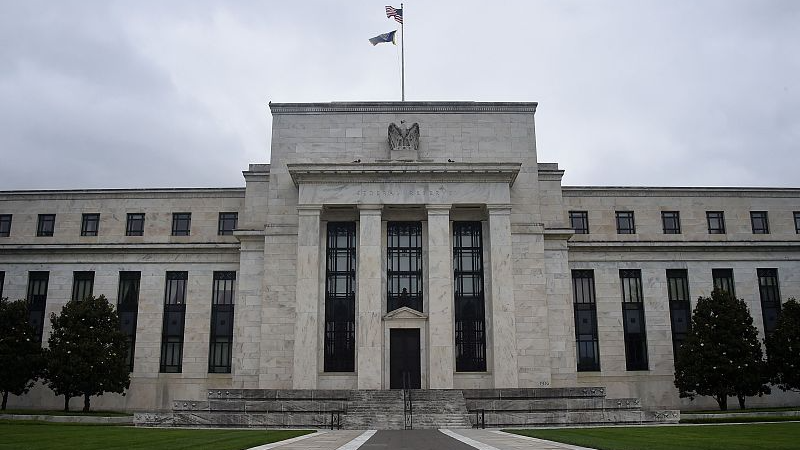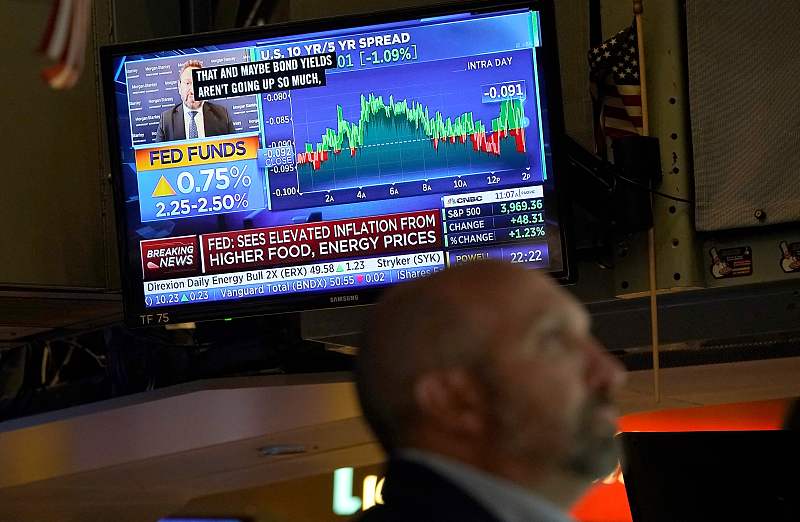
The Federal Reserve building in the U.S., June 17, 2020. /CFP
The Federal Reserve building in the U.S., June 17, 2020. /CFP
Editor's note: Bradley Blankenship is a Prague-based American journalist, political analyst and freelance reporter. The article reflects the author's views and not necessarily those of CGTN.
The United Nations Conference on Trade and Development (UNCTAD) said in its annual report this week that central banks, particularly the U.S. Federal Reserve, are risking a global economic recession and prolonged stagnation if they continue to raise interest rates. The agency argued this would hit poor countries especially hard, with economic output in these countries knocked out by a whopping $360 billion over three years.
The UNCTAD notes that the current policy by the Fed and other central banks in rich countries are trying to solve supply-side issues by cooling demand – but that this makes no sense and is ineffective.
The agency highlights that the inflation we're seeing is supply-driven and not demand-driven. The Fed and other central banks have been acting on the false idea that pent-up demand from the ongoing COVID-19 pandemic or modest wage increases in recent years was to blame for inflation.
But this is wrong. The inflation stimulus Americans received during the pandemic is gone and not the main driver of the highest inflation in four decades. Any wage increases workers scored during the pandemic have actually translated into wage decreases in real terms. There is no out-of-control consumer spending; demand is simply attuning to where it was at pre-pandemic levels.
Likewise, it was believed that an unwillingness to work by some Americans could be spurring inflation. Not only is this a slap to the face to an estimated 500,000 who cannot work due to a disability from COVID-19 infection, but it's contradicting the Fed's own policy now.

Traders work on the floor of the New York Stock Exchange (NYSE) in the U.S., July 27, 2022. /CFP
Traders work on the floor of the New York Stock Exchange (NYSE) in the U.S., July 27, 2022. /CFP
As Ian Shepherdson, chief economist at Pantheon Macroeconomics, said in a report: "The Fed clearly wants the labor market to weaken quite sharply. What's not clear to us is why." We were led to believe that a lack of workers was stringing up critical supply chains and everyday services. Now the Fed wants to increase unemployment – and no one, not even economists trained in this field, can find a satisfactory explanation. That's more than likely because there isn't one.
So what's causing inflation and what can we do about it? Well, since it's a supply-side issue, it has to do with suppliers. One important factor, especially in the U.S., is a lack of competition that allows giant corporations to set high prices without any viable pushback from the market. Key industries, including food and energy, are so monopolized that these companies are posting record profits on the back of rising prices.
Another key pressure on suppliers is the ongoing COVID-19 pandemic, which is not over by any stretch of the imagination. As Western countries find themselves in yet another infection wave this autumn, and new strains of the virus pop up, significant amounts of the workforce can be knocked out at any given moment. This has an immediate effect on supply chains and explains why many countries have relaxed their quarantine recommendations, to prevent supply chains from collapsing at the grave risk of infection peaks.
Another important supply-side challenge is climate change. Many key industries have been struck by climate-driven extreme weather events, including lumber, semiconductors and foodstuffs. This issue is not going away and will only worsen without much-needed investment in the green economy and sustainable infrastructure.
Europe could see more natural and human-made disasters as the continent deepens its reliance on American liquefied natural gas (LNG) imports that are housed in terminals right in the middle of the so-called "Hurricane Alley" near the Gulf of Mexico in the U.S.
Addressing supply pressures would take courage from politicians in Washington, which they haven't shown so far. The Fed is stuck by using its limited tools to do the only thing it knows how to do: Raise rates. This is strengthening the U.S. dollar and giving the appearance of helping the economy, while not really doing anything and dooming the developing economies.
The Fed should refrain from raising rates and to coordinate any action it takes with the developing countries. Meanwhile, U.S. Congress must address critical topics – market competition, the pandemic and climate change – to ameliorate the country's inflation. One easy start would be for U.S. Representatives to heed the advice of the UNCTAD and implement a windfall profit tax, since many European countries have already started to do so.
(If you want to contribute and have specific expertise, please contact us at opinions@cgtn.com. Follow @thouse_opinions on Twitter to discover the latest commentaries in the CGTN Opinion Section.)